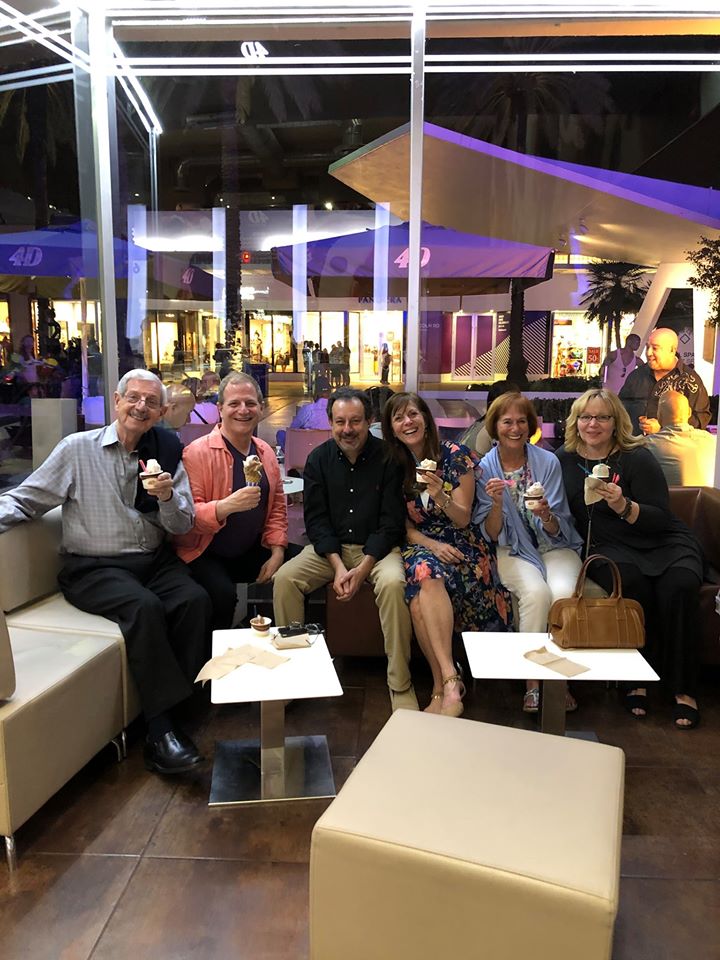
I used to say that consciousness resides in pockets. What I meant was that, while consciousness resides in everything at all times, the holding and upholding of pure conscious intention usually is not mainstream.
There are usually individuals that are tuned into the flow of Being that inspire movements or molecules of manifestation. Leaders such as Abraham, Moses, Jesus, Buddha, Mohammed, and Lao Tzu spark the obvious spiritual practices, but there are countless other examples. There were artists and patrons that came together to give rise to the Renaissance, both in Europe and in Harlem; a nun who ministered to lepers in Calcutta, a woman on a bus and a Baptist minister standing up for racial equality in America, four lads from Liverpool who harmonized right into the heart of Love; an ex-Harvard professor who came back from India to help the Woodstock nation to Be Here Now.

These pockets of consciousness are all around us but, usually by the time we notice them, they may have started to dissipate or lose the luster of their original intention. The question arises, why with a stream of such inspired efforts meant to lift us collectively into sweetness and light, do we seem to slip back into unconscious conflict?
The Buddha pointed to a possible reason for this. He said there were five hindrances to enlightenment:
1.Greed/ sensory desire
2.Hatred/ ill will
3.Agitation of mind and body/stress
4.Laziness/ indifference
5.Doubt/fear

I recently heard a talk by Ramananda John E. Welshons, who said that earth was the place where we worked on freeing ourselves from these hindrances. He said if you didn’t have at least one of these things that you were working out, what were you even doing here?
Most of us laughed when he said this. It is a freeing thought to realize that we are not tragically flawed but are in the midst of what is essentially a kindergarten class.
Each spiritual practice and faith describes individuals who are in this class to teach, tutor or otherwise help students graduate to the next level. In Buddhism, bodhisattvas are individuals who use their enlightenment to alleviate suffering. Judaism talks about Lamed Vavniks, or 36 anonymous people who secretly keep the world in balance through selfless acts of loving kindness. There are tzadikim, pirs and saints; strangers, family and friends motivated by compassion who help untie the knots in our collective consciousness.

What amazes me is that, in the teeth of these active hindrances, we are able to connect to one another altruistically at all. Even though many of our heroes, leaders and celebrities are seriously flawed, the fact that they manage to inspire us to care for more than our own self interests is incredible.
My wife, Julia, has often pointed out that my family is an anomaly because it is not dysfunctional in the typical ways. We actually enjoy one another and are, for the most part, light-hearted in each other’s company. After my father’s passing in March, I realized how much we had him to thank for that. Although he worried and struggled with his temper, his raison d’être was to make sure that his family was healthy, individually and as a whole. He extended this intention to his community as well. Because of his efforts, many of which were behind the scenes, we have shared a pocket of consciousness with a rippling circle of friends and family for decades.

Now that my dad is gone, I realize the work that is needed to maintain this seemingly effortless bond, as I take up what portion of him I can to carry on the work that is never done. What gives me hope is that the members of my family are all willing to work on themselves to overcome the hindrances that could tear us apart.
Notice in the midst of political divide, climate change and global unrest, individuals and groups are currently coming up with solutions to take micro-plastic from the oceans, to make ocean water potable, to remove CO2 from the air, to replace styrofoam with mushroom foam, and to build bridges across our social chasms. They may not be mainstream but, while the news seems apocalyptic, there are pockets of conscious guidance all around us.
In the film, A Beautiful Day in the Neighborhood about Mr. Rogers, a journalist asked Mrs. Rogers how it felt to be married to a saint. She said that she didn’t like that word, saint, because it made you feel that you couldn’t do what he did. She pointed out that Mr. Rogers wasn’t perfect but made a practice out of, essentially, transmuting his hindrances into empathy.
We are all gathered around a table with one another. While it may seem easier to blame than to pass the salt, our willingness to work through our own hindrances uplifts the perspective of those around us and that extends a true Thanksgiving which isn’t poultry or straining to be civil. We may even find that our family are helping us to enjoy the feast before us.


